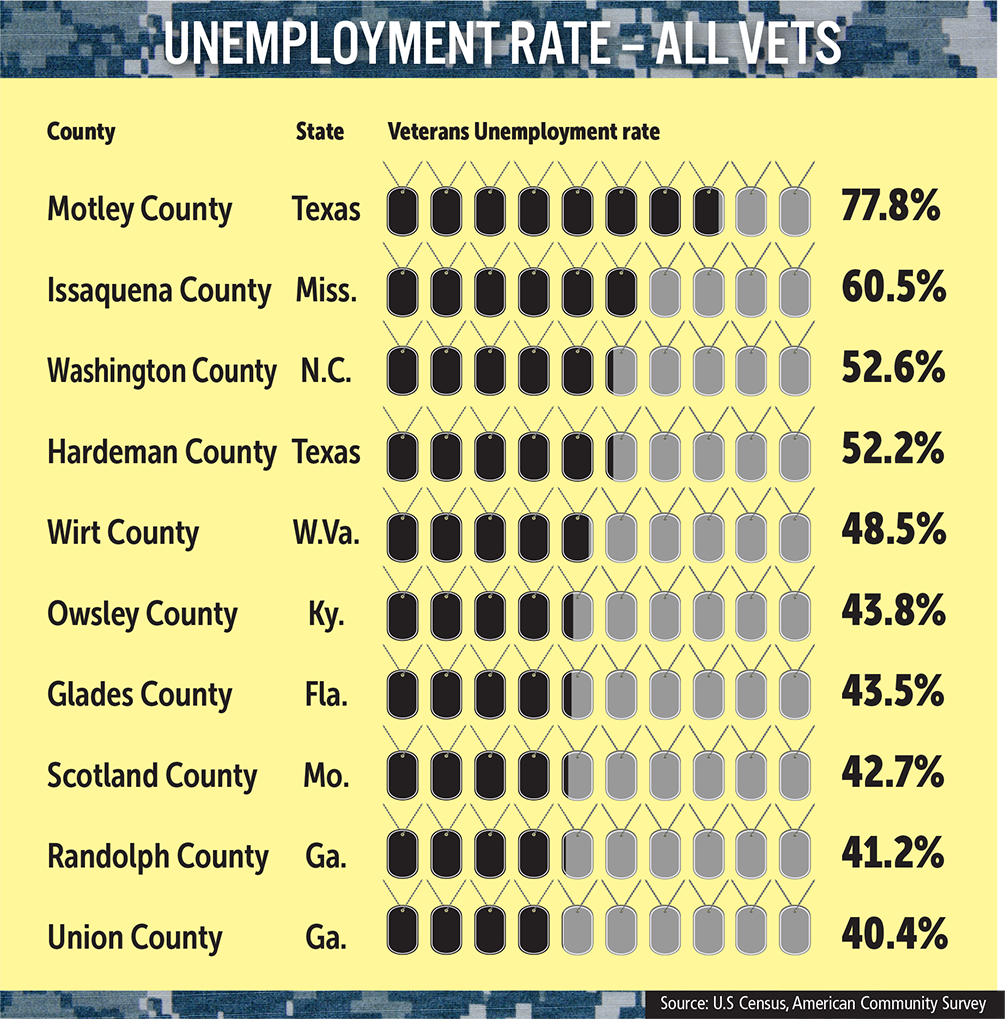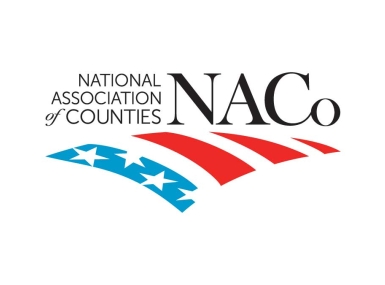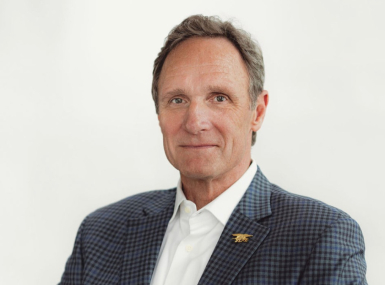A closer look at the role of the county veterans service officer
Author
Upcoming Events
Related News


Share
|
@NACoTweets: County veteran service officers are like prosecutors or defense attorneys |
County veteran service officers are like prosecutors or defense attorneys. They’re always building a case for their clients. That’s how Jim Golgart, president of the NACo affiliate, the National Association of County Veterans Service Officers, NACVSO, sums up the mission of his association’s members.
Three-quarters to 90 percent of the veterans’ claims submitted for VA benefits come through a county veterans service office. The CVSOs are staffed by accredited veteran service officers, trained to navigate a bureaucracy nearly as complex as a military campaign.
They help veterans gather the necessary paperwork to support claims, file claims and assist in appealing claims that have been denied. It requires tenacity and passion, Golgart said.
He tells a story about a veteran who had served on a nuclear aircraft carrier. The man claimed radiation from the ship had caused his leukemia and had submitted a benefit claim to the VA. It was denied. He took the news to Golgart’s office, which serves the 2,200 or so veterans in Le Sueur County, Minn. Golgart did some research on the causes of leukemia and among them found exposure to petroleum products as a suspect. The veteran, as it turned out, fueled the ship’s planes.
Armed with this new information, Golgart helped him resubmit his claim. This time the claim was approved.
County veterans services offices are the at-home, back-to-the-community stop for veterans who have served the nation, fighting its wars and keeping its peace. They are the local link in an intergovernmental chain serving the country’s 21.8 million veterans.
The county veterans service office stretches back to the Civil War, but really took off after World Wars I and II, he said. The offices exist at the county level, by statute, in more than half of the states. A dozen or so states do not have CVSOs, including the District of Columbia and Virginia, according to Jim Young, Vernon County, Wis. CVSO director and NACVSO immediate past president.
That doesn’t mean there is no help for veterans. State regional veterans affairs offices and Veterans Service Organizations such as the VFW, American Legion and Amvets have VA-accredited service officers, but they are unlikely to know the community as well as a county-level officer would, and not be as facile at making connections with other nonprofit organizations in the community serving vets, Golgart said.
If a county is interested in opening its own CVSO, Golgart suggests the first steps involve a political commitment to fund the office, and a sweep of the veteran demographics in the county, including a review of the nonprofits already serving the veteran population.
In some states CVSOs are independent departments. In other states, they reside in the county health and human services department. Golgart said contacting his organization is a good way to start. It can recommend staffing levels, supply model job descriptions and address budgeting needs.
“We can help them get an idea about what’s needed,” he said.
To learn more, contact Golgart at jgolgart@co.le-sueur.mn.us or at 507.357.8279 or 507.420.1937.

National Association of County Veterans Service Officers can help
By NACVSOExecutive Board
The National Association of County Veterans Service Officers (NACVSO) exists to provide professional education, training and networking for the local county veteran service officers.
The association’s efforts led to official recognition in April 1993 by the U.S. Department of Veterans Affairs “for the purpose of preparation, presentation, and prosecution of claims under laws administered by the Department of Veterans Affairs.”
In other words, CVSOs accredited through NACVSO can now represent veterans in obtaining their federal VA benefits. In fact, several states require CVSOs to have NACVSO accreditation as a condition of employment.
County Veteran Service Offices are almost entirely funded by counties, despite the benefits work they engage in with the Department of Veterans Administration at the federal level.
CVSOs bring significant benefits to counties. In FY14, NACVSO-accredited members were directly responsible for more than $28 billion in federal compensation and pension benefits being paid directly to veterans. They also helped veterans receive more than $35 billion in health care and other benefits.
Currently, the NACVSO has accredited CVSOs in 29 states and accredited state service officers in six different states.
The startup cost for a local government to implement and maintain a veteran’s service office would be based on several factors and can vary considerably. For smaller counties, it could be as little as $100,000 in salaries and operating costs. A county with just over 50 veterans brings in almost $1 million in benefits for those same 50 veterans, making the investment a sensible use of taxpayer dollars.
From its humble beginnings, the organization has grown to more than 1,800 members in 35 states and two Native-American tribes, all of whom work with more than 8.4 million U.S. veterans and their families.
-National Association of County Veterans Service Officers Board of Directors
For more information, visit NACVSO’s website at http://nacvso.org/
Attachments
Related News

Counties Mark Five Years of Operation Green Light for Veterans
County buildings and landmarks light up in green November 4-11, showing support and highlighting resources available for veterans and their families

Highlights from 2025 Operation Green Light for Veterans
Operation Green Light for Veterans returns. Explore highlights from counties across the country.

County service meets a veteran’s need for purpose in Spotsylvania County, Virginia
After Drew Mullins transitioned from a high-performance lifestyle in the military, he found the environment and purpose he sought when he took office in his county.
